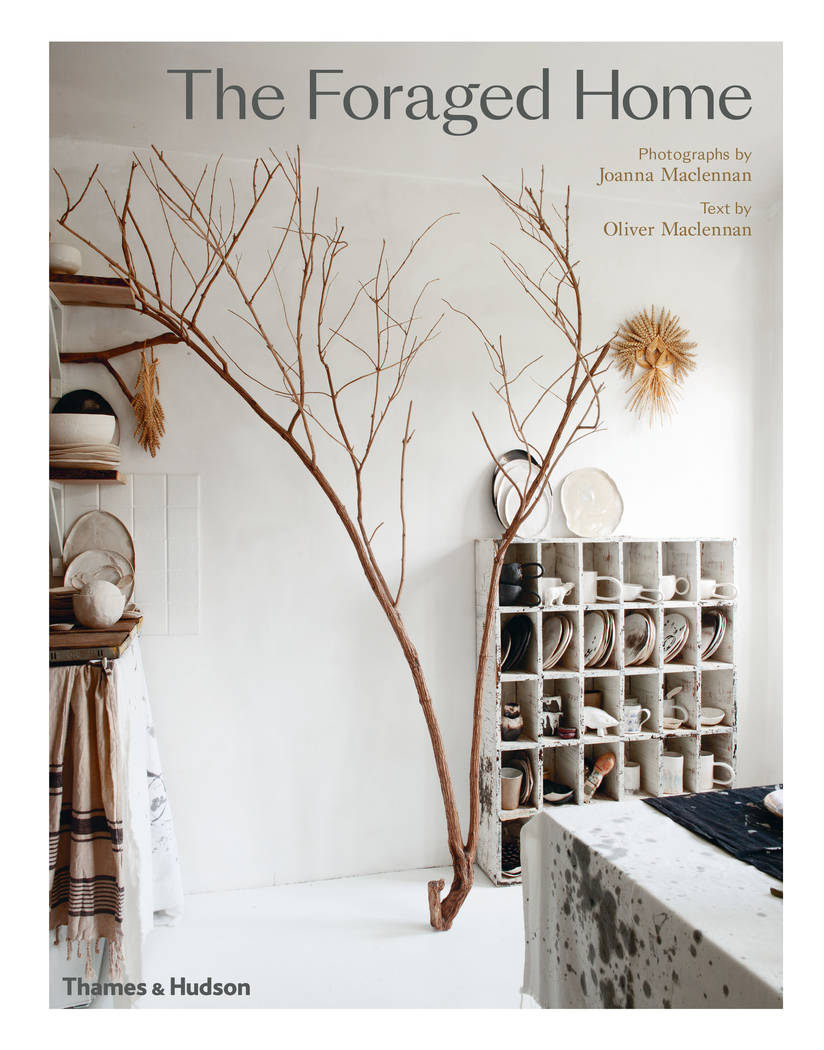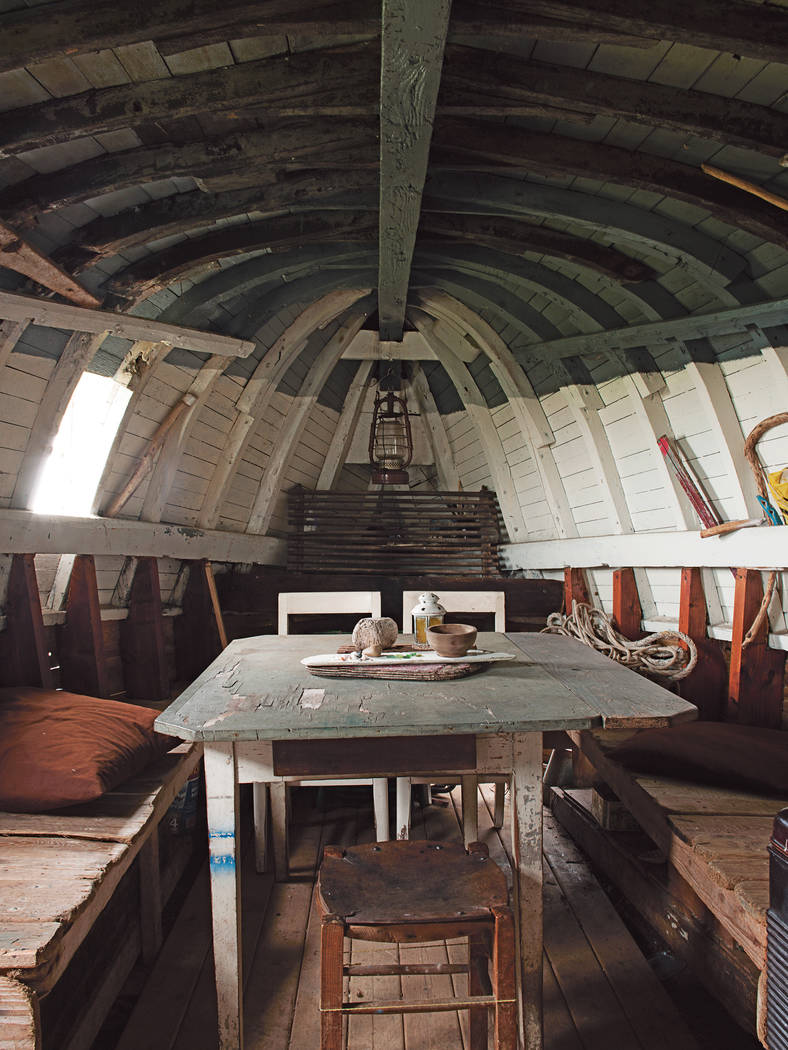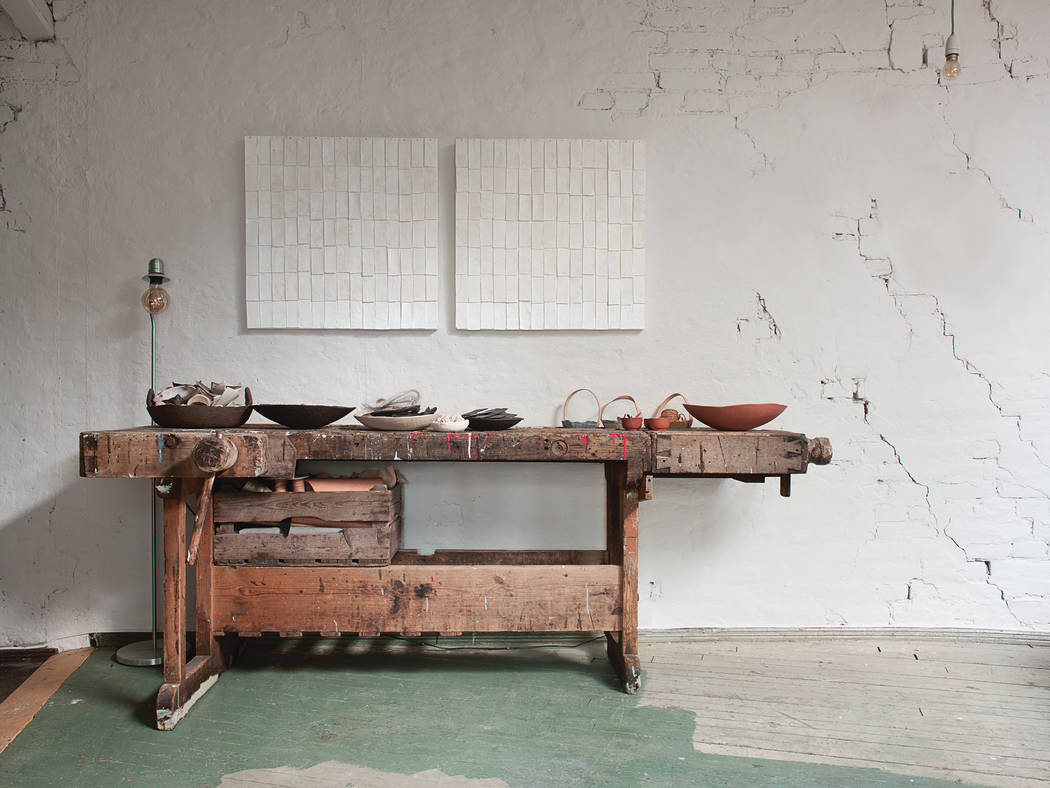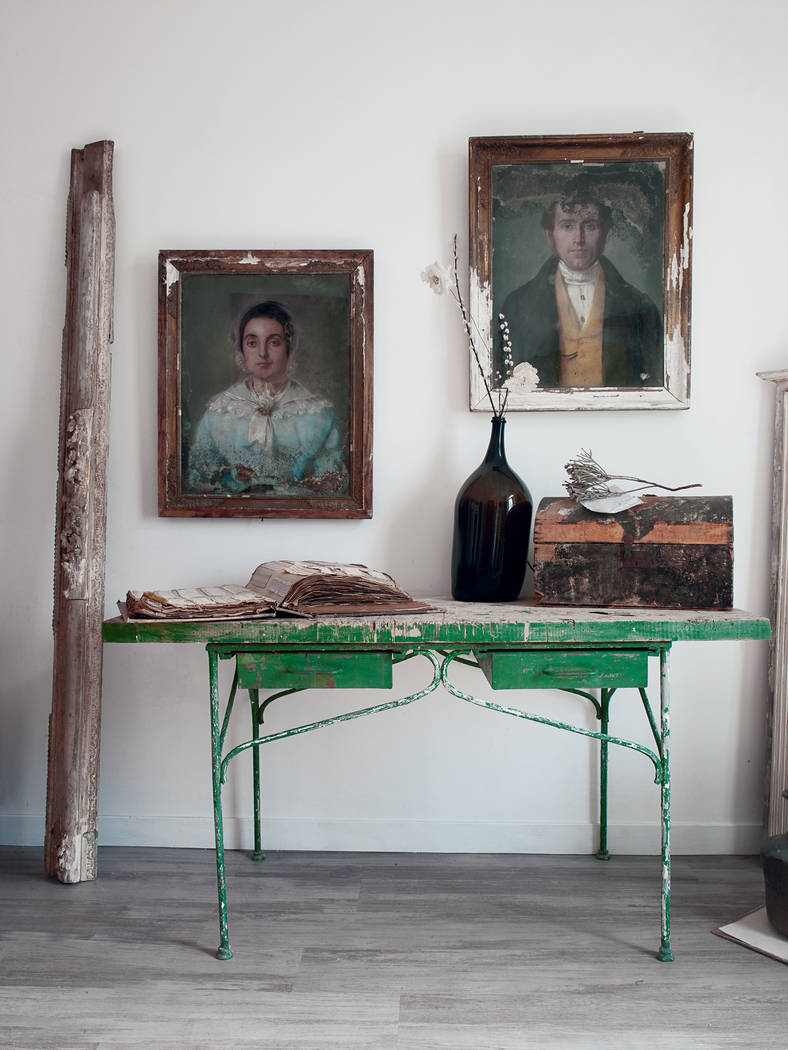Forage for decor items in nature, garbage bins
For Joanna Maclennan, the old adage about one man’s trash being another man’s treasure is a way of life.
Having spent most of her life living in the picturesque countrysides of England and France, the professional photographer said she has long been a fan of decorating spaces with found items — from seashells and tree branches to furniture — that she has collected while out in nature, at flea markets and by sifting through the contents of garbage bins, among other spots.
“It’s something that I do all the time,” said Maclennan, whose photos have appeared in numerous European interior design magazines.
Her recently published book, “The Foraged Home” (Thames &Hudson), which she co-authored with her copywriter brother Oliver Maclennan, highlights the interiors of nearly two dozen homes throughout Europe, Australia and the United States.
Their rooms are filled with unusual finds that have been repurposed in unlikely ways. In fact, several of the abodes themselves were constructed with reclaimed materials or are structures that formerly served another purpose.
Case in point: The “Upturned Boat” home in Audierne, France, was built in 1950. This sizeable space once was a crab-fishing vessel — that is, until a French artist found it abandoned in a marina, towed the boat onto land and flipped it upside down.
Now, the bottom and sides of the wooden hull serve as the pitched roof and rounded walls of this rustic, nautical-themed home that is decorated inside with large pieces of driftwood, thick ropes and small crab claws. An old dolphin bone hangs from the ceiling. Its floors are wooden slats which makes the structure easy to move should the owner ever decide, as he jokes in the book, to “turn and go on the sea.”
A home in Provincetown, Massachusetts, called the “Whale House” looks more like a giant treehouse. It was entirely hand-built by its owner from pieces of twisted, knotty old wood that he foraged nearby and in other New England locales.
“That was incredible,” Joanna Maclennan said of the home. “It’s 20 years that he had been building that.”
Foraging is at the heart of the reduce, reuse and recycle movement and complements the emphasis that has been placed on sustainability in construction and interior design. However, there is more to it, she said.
“I think the idea is to be a little more thoughtful about how we go about things,” Maclennan explained. “If you’re going to go to Ikea … get the essentials and things that you need. Don’t go to Ikea thinking, ‘This piece of furniture will be good for a month or so until I find something better and then I can just chuck that thing into a bin.’ … I think it’s just (about) being more thoughtful in that respect.
“I also think it’s really fun to play around with your interiors. I think there’s something really exciting about finding something that’s free.”
Maclennan’s own home, a 19th-century farmhouse in Provence, France, is featured in “The Foraged Home.”
Several tall sheets of rusted corrugated metal serve as the headboard for her bed. Aged prints in ornate, distressed gilded frames hang backward on the wall because, as she explained, “maybe the back is more interesting than the front.”
Living in the south of France, Maclennan is located near the Mediterranean Sea. Pine forests and vineyards brim with natural flora and other items (think sea glass and twisted vines) just waiting to be foraged and repurposed as decor.
While it may prove a bit more challenging to forage in the desert and urban terrains of Southern Nevada, she is convinced it is still possible to do so successfully. Even prickly, dry scrub brush can be transformed into a decorative piece. “I think that can be very beautiful. Bits of bark, bits of wood.”
Also, don’t underestimate the potential treasure that awaits inside local garbage bins or curbside at private homes on trash collection days, she said. With a bit of imagination, it is possible to breathe new life into discarded, broken furniture and other items.
“It’s recycling in a different way,” Maclennan said. “I think if we look, if we become more aware of it, there is a way of being creative around it and I think we should take pleasure in it.”
Las Vegas interior designer and stylist Lisa Escobar calls foraging “a different approach” to design. “But I get it, and I have a lot of appreciation for the intention behind it,” she said. “They’re using what’s already here and in nature, maybe lessening the carbon footprint.”
However, Escobar said she would be hesitant about attempting to fashion an entire home with foraged finds. “You’re just not going to find everything that you need on the side of the road.”
For those interested in giving this design style a try, she recommends limiting the number of found elements that are displayed so that they serve “as a conversation piece.”
She added, “I don’t know that it could be one of your biggest (design) pieces” without some restoration. “If you found dining chairs on the side of the road, I would hope that you would give it a little TLC — sand it down, give it a new paint finish, reupholster the seats, something like that.”
Above all, Escobar said it is important to consider how foraged items will function in your home. “If somebody said, ‘Oh, I love this branch,’ and then they try to (use it) to hang a shower curtain or something they’re using every day … it needs to make sense for their functionality as well as the aesthetic.”


























